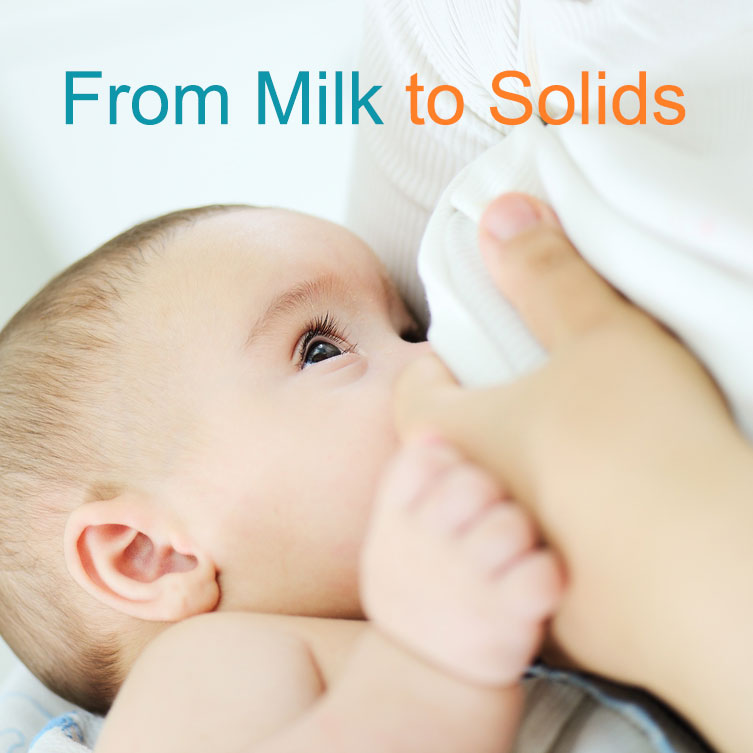

Sleeping and Lullaby Secrets
Everyone has an opinion on babies and sleep that they are sure will be the answer to your sleepless nights. This is one subject on which you must be firm and make your own decisions about the type of sleeping schedule you are going to have. Some baby experts will tell you that you should never let your baby cry before falling asleep. Others will tell you to never give in to a crying baby once you have put him to bed. Which is right and which is wrong? It all depends on your needs and those of your baby. Here is a collection of tips and ideas that you either can or cannot incorporate into your bedtime routine.
Before deciding what to do with a baby that won’t sleep, first answer the question: where is the baby sleeping? Some parents insist that their baby should sleep in his own crib in his own room. Others want their baby in their bedroom.
Neither is right or wrong and there are advantages to both. If your baby sleeps in her own room you will probably get more rest for yourself, since you won’t be disturbed by the sleeping noises made by newborns. Your baby may wake less often if she is in her own room, but not always . On the other hand, if she is sleeping in the same room as you are, you might find it less disturbing and easier to attend to your baby’s needs. However, if your baby sleeps not only in your room but also in your bed, you should be aware of some of the dangers of sleeping in the same bed together. Baby experts are completely divided on this subject. You should research the issue of safety versus emotion and then decide for yourself if you are going to take your baby into bed with you.
You might need more sleep than your new baby. Newborns are often unable to sleep through the night until they have at least doubled their weight. This usually happens at between four and five months of age.
Once you have decided where your baby is going to sleep and how much sleep she should have according to the charts, you will want to think about some sort of routine, whether or not she will sleep any better. A sleep routine can be a soothing and comforting part of your baby’s nighttime ritual. Such a ritual will enable her to understand, as she grows, that bedtime comes after bath time and she will start to settle down if she is comforted by the bedtime routine.
There are many ways to establish this routine. Here are some tips and ideas for bedtime routines:
1. Start with a bath, some cuddle time, a song or story, a feeding, more cuddling, and then bed.
2. Sing a soothing lullaby as you put your baby to bed.
3. Try to do things in the same order, with the same people involved, at the same time each night, so that you create a pattern that your baby will recognize as the pre-sleep routine.
4. Make sure the lights are low and dim. Your baby should get used to the idea that when it’s dark, it’s time to sleep.
5. Remember that, whatever routine you set up for you and your baby, he should learn that when you put him into bed, no matter how pleasant the bedtime routine, that is sleep time.
Number five in the above list is a very important point to remember when setting up your bedtime routine. If you cuddle your baby, lay down with him, or sing to him again after you put him to bed, he will come to expect that whenever he isn’t ready for sleep all he has to do is fuss and he will have the pleasure of being rocked again.
You are not trying to play a game of control or deny him your affection after he has been put into bed. After all, it’s normal for him to want to be with you. The aim is to make him understand that after completing the bedtime routine, it is time to sleep.
Nighttime feedings will be discussed in the section “From Milk to Solids”: Just remember that if you are feeding your baby during the night you won’t be able to establish a bedtime routine. You may have to delay a good sleeping pattern until your baby is ready to stop feeding during the night. Most babies do that around five to six months.
The Lullaby, or Cradle Song, has been around for centuries. Singing a lullaby during baby’s nighttime ritual will settle him and prepare him for the stillness of sleep.
Using music to lull and soothe your baby before sleep can be an enjoyable experience for both of you.
More about music in the chapter “Using Music to Calm Your Baby”.
There is much more to the “sleep” topic. Basically, you will establish your own nighttime rules by trial and error. As your baby grows older his sleep patterns will constantly change. Baths and lullabies will establish certain characteristics that can be adapted to whatever nighttime routine you decide on to suit your baby’s age and needs. With a lot of patience and love you will make it through his ever-changing sleep requirements.

One of the questions you will ask yourself during your baby’s first year is: What do I feed her? And when? You start out with either breast milk or formula. But what happens afterwards? This chapter will help you learn what types of foods to introduce into your baby’s diet at various stages. The information here is only a guideline. Your doctor may provide you with other advice and your baby may have ideas of her own.
For the first four to six months all your baby needs is breast milk or formula. After that age you may start to introduce her to solids. Not all babies will be ready for this at the same time. So how do you know when? There are some simple rules that will tell you when to start your baby on solid foods. Check with your doctor as well for his/her professional advice. Here are some clues as to whether the time has come:
• Your baby has doubled her birth weight.
• She shows an interest in the food you are eating and even tries to grab it from you.
• Your baby consumes 100 grams or more of breast milk or formula each day.
• She often puts things into her mouth.
• Your baby can sit up with some support and can turn her head when she is full.
If your baby does all of the above she is probably ready for solid foods. Another indicator is that she always seems to be hungry. However, do not introduce solids too early into your baby’s diet, because there is a risk of her developing a food allergy. Another reason for waiting four to six months is because she must be able to properly chew and swallow before she can eat solid food safely. Her digestive system must mature a bit so that she can handle the new foods.
If you are breastfeeding you will be taking cues from your baby as to whether she is full or hungry during the first six months. If you are using formula you will probably be following the guidelines on how much to feed your baby, as well as taking cues from her.
Giving up night feedings: By the time your baby is six months old you can begin to stop night feeds, if you haven’t already done so. You could begin by offering less and less breast milk or formula for night feeds. Eventually she will stop waking as she adjusts to not eating during the night. If she is bottle-fed you can substitute water for milk or formula. Your baby is almost ready to start eating solids and then she will not be so hungry at night.
Four to six months: introduction to solid food. Wait until your baby is at least four months old before introducing her to anything other than breast milk or formula.
You could start with tiny amounts of baby cereal thinned with breast milk or formula. You can try fruit juices thinned with water. Delay introducing orange juice for another month or two as it may be too acidic.
Six to seven months: fruits and vegetables. Once your baby has become used to cereal you can add mashed/strained fruits and vegetables. Start with small amounts (one teaspoonful), increasing gradually as she gets used to the new food. Only introduce one new food at a time and wait 2 to 4 days before offering something new. That way, if she has an allergic reaction you will be able to pinpoint which food is the cause. Make mealtime a happy time. Be sure that only milk or water goes into the bottle, and use a cup or glass for juice.
Using the bottle for juice can lead to dental problems later, due to the sugar content of juices.
Seven to eight months: protein. These include strained meats, cottage cheese, egg yolk, yogurt, and dried beans. Again – introduce one new food at a time and wait 2 to 4 days before introducing another food, starting with a small quantity (one teaspoonful) and gradually increasing.
Eight to twelve months: add other foods. By now your baby will be ready to join in with the rest of the family at mealtimes. Start by adding soft table foods, such as mashed potatoes, squash, soft meats, and soups. As your baby gets more teeth you will be able to add more items.
There are some things to keep in mind as your baby tries more and more types of foods:
1. Your baby does not need sugar, salt, desserts, or soft drinks.
2. Talk to your doctor about the right time to add pasteurized cow’s milk to her diet.
3. Avoid nuts, seeds, popcorn, raw carrots, and other hard foods.
4. Be sure to feed your baby a variety of good, healthy foods so as to promote good eating habits.
5. Let your baby feed herself. Although this process may be messy, it is a very important step towards developing her independence and motor skills.
As you gradually introduce your baby to solids during the first year, keep in mind that every child is different and that the process of integrating solid foods may or may not follow the “usual” course of action. You will soon find that your baby has her favorite foods that she looks forward to eating, as well as foods that she will refuse… Try to take account of her likes and dislikes while remaining within the guidelines outlined here.

Music is a wonderful way for you to calm and soothe your baby, especially during the first year. Many parents say that they could do nothing with their crying baby until they tried music.
Certain distinct sounds have been shown to calm even fussy babies: the sounds of nature, white noise, and music.
Even if your baby doesn’t cry much you may use music as often as you can to encourage a feeling of calm and peacefulness. All you need is a few minutes every day and before long your baby will be looking forward to hearing the songs he is familiar with.
It is very easy to introduce your baby to music from day one.
You don’t need the perfect song or a certain type of music.
All you do is start having your baby listen to your favorite songs and music. If jazz is your favorite, let your baby listen to it as he sits in his baby seat watching you in the kitchen. Whatever you play, your baby will listen and his mood will be altered by it all.
Besides the music that you yourself introduce to your baby, there are hundreds of CDs on the market filled with baby songs and lullabies. At the end of the day you may want to play a CD of quiet baby songs with a slower beat. There is so much to choose from that you will have a hard time deciding. Choose something that interests you. Many baby CDs have lullabies and faster beat songs together.
Playing music has other benefits besides soothing your fussy, crying baby. These include:
• Babies are introduced to musical sounds.
• Music enhances your baby’s behavior and cognitive skills.
• Relieves stress for the entire family.
• Will stimulate curiosity and an interest in music.
Take time to find a variety of CDs for your baby to listen to. You’ll soon notice which music your baby is most drawn to and you can use it when he is particularly fussy or crying.

Published: Feb 19, 2016
Latest Revision: Aug 30, 2016
Ourboox Unique Identifier: OB-108545
Copyright © 2016








